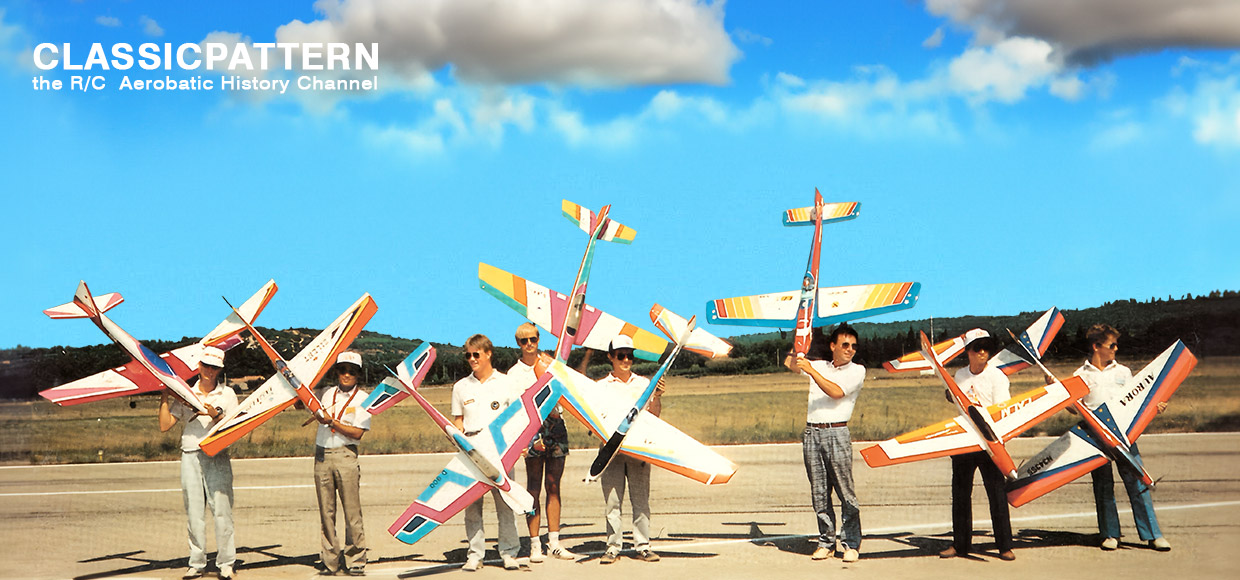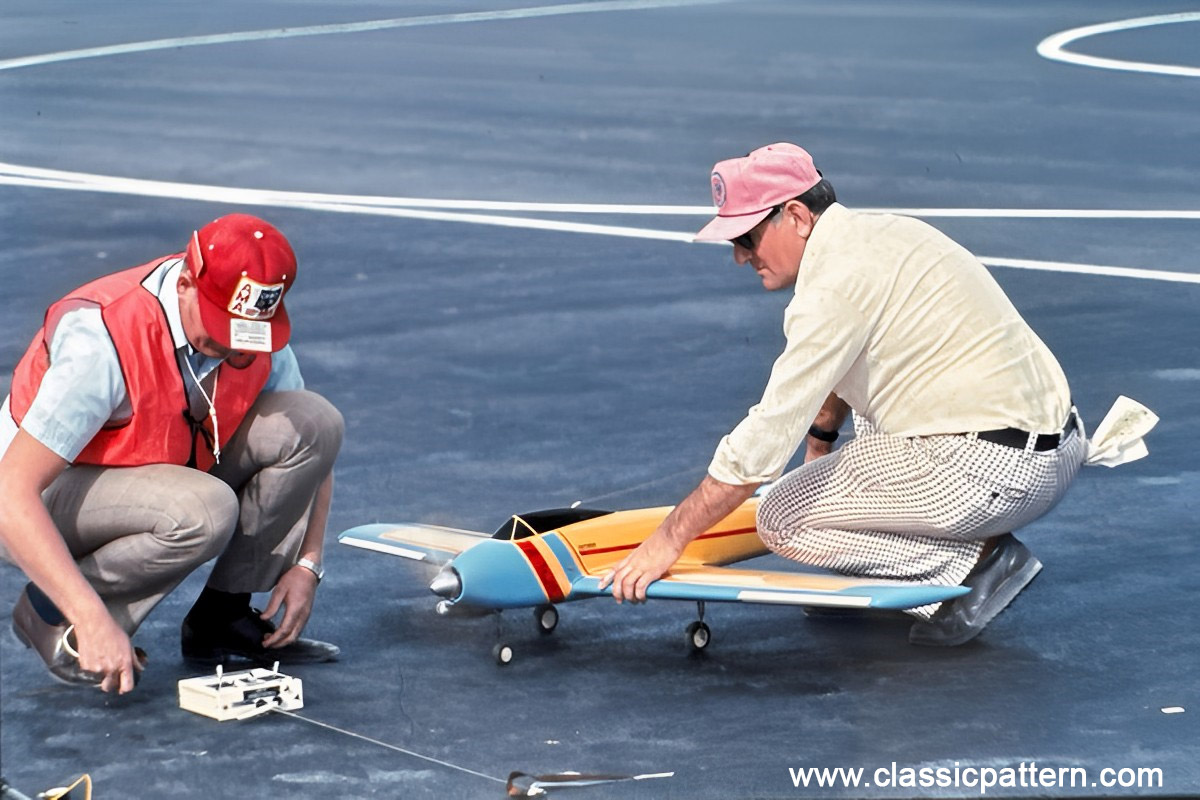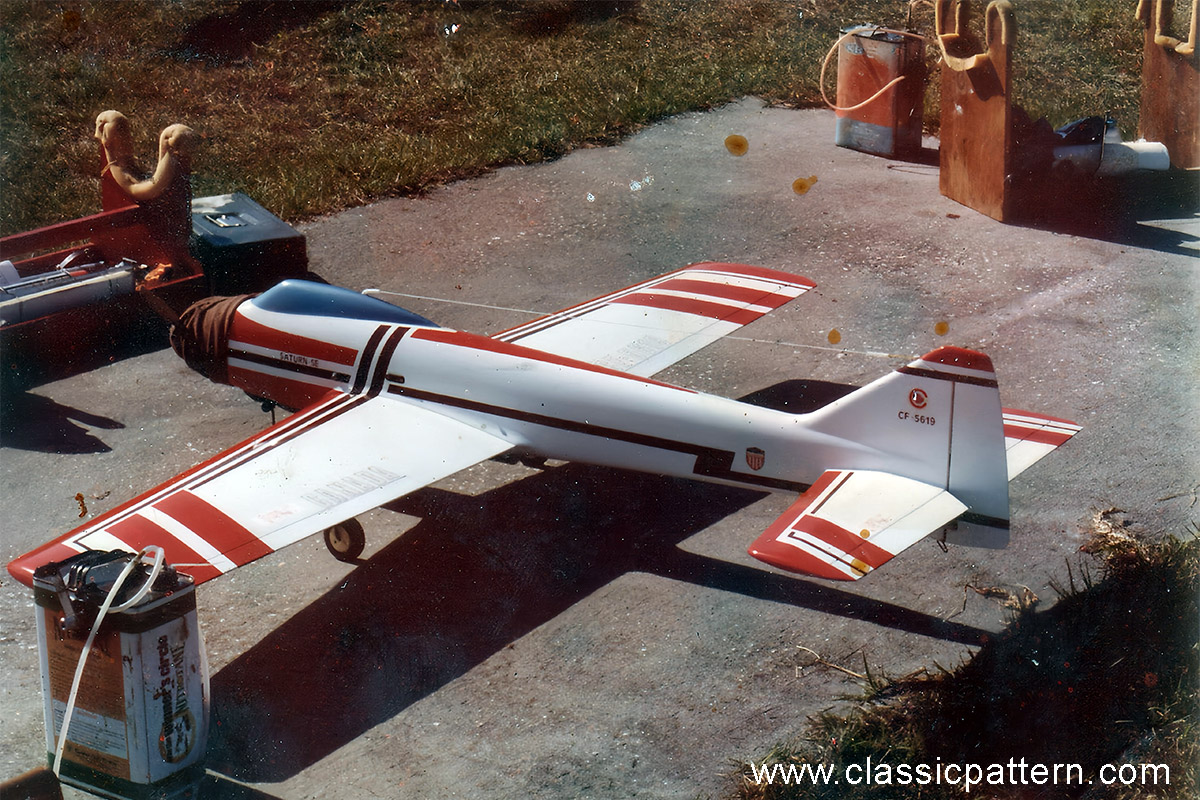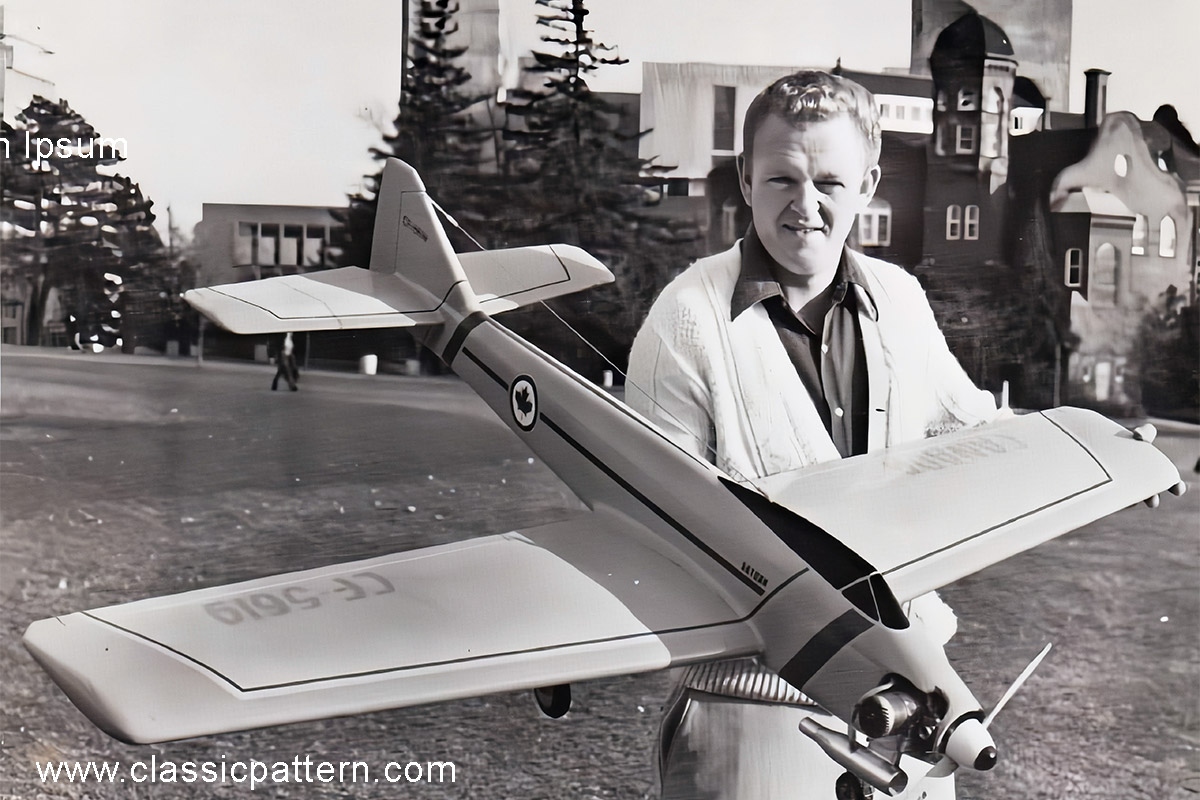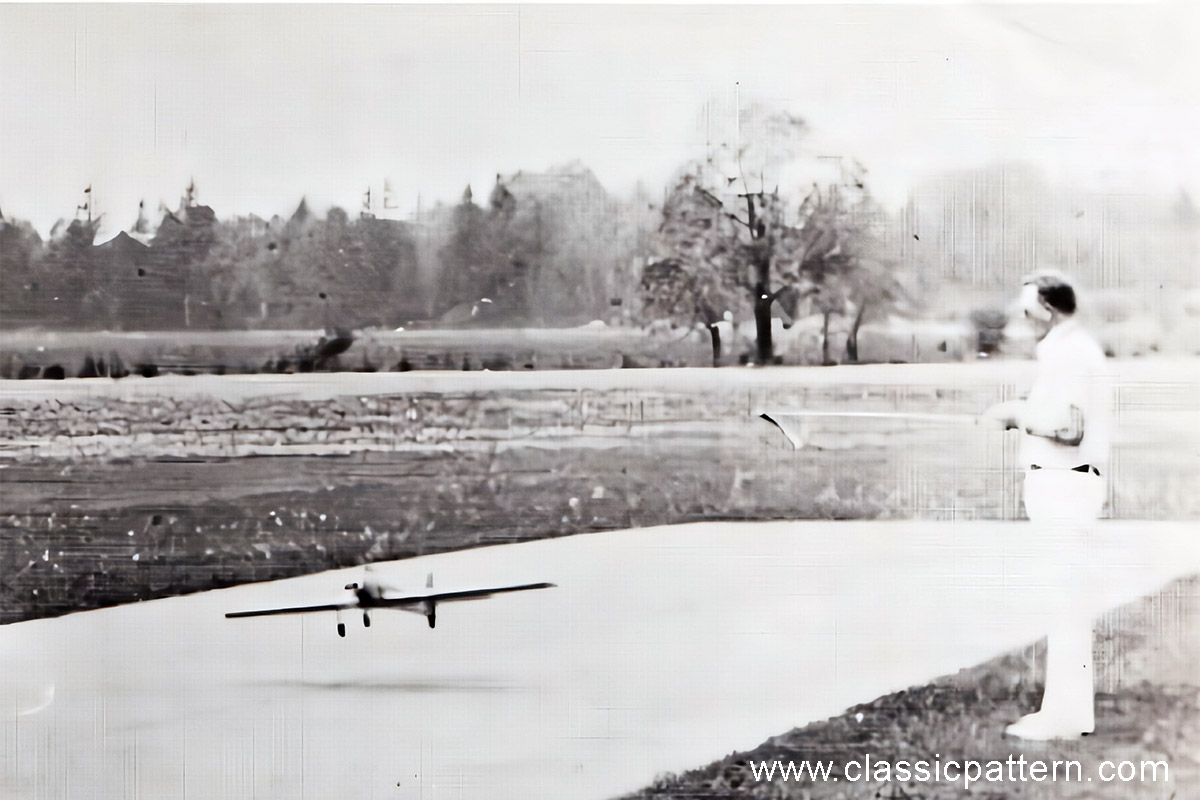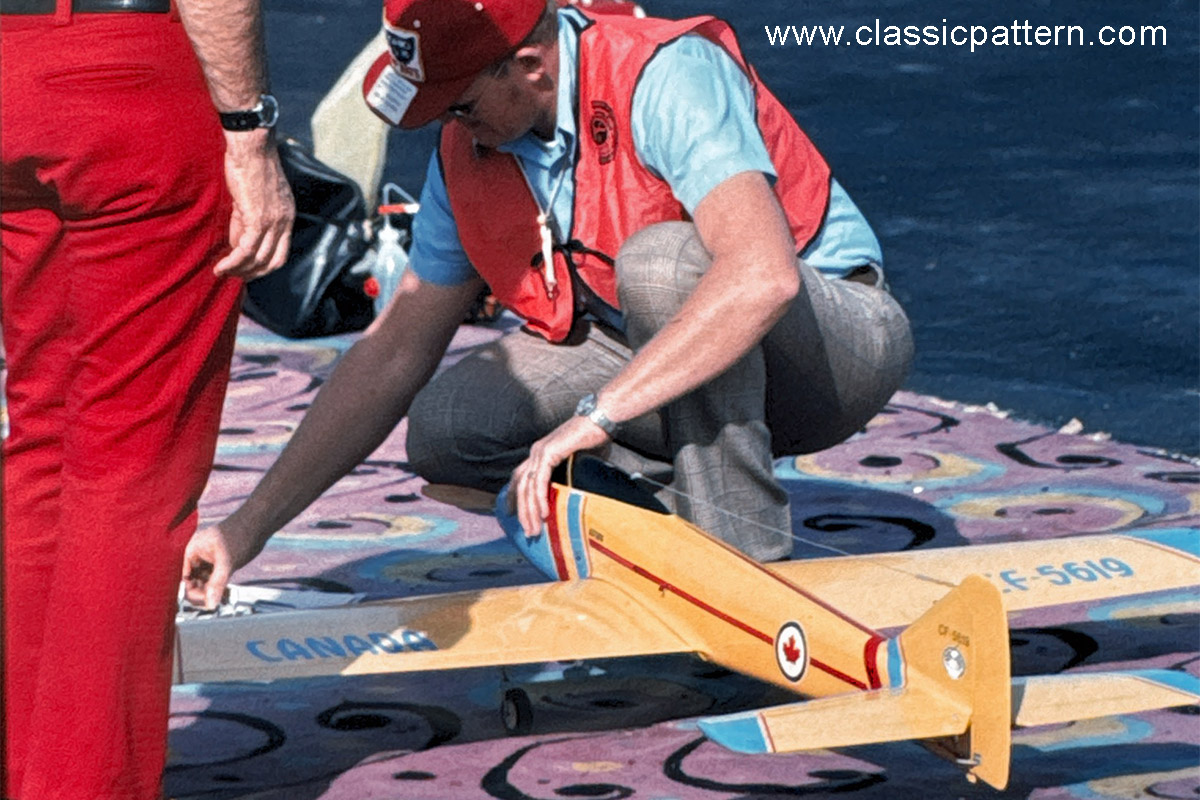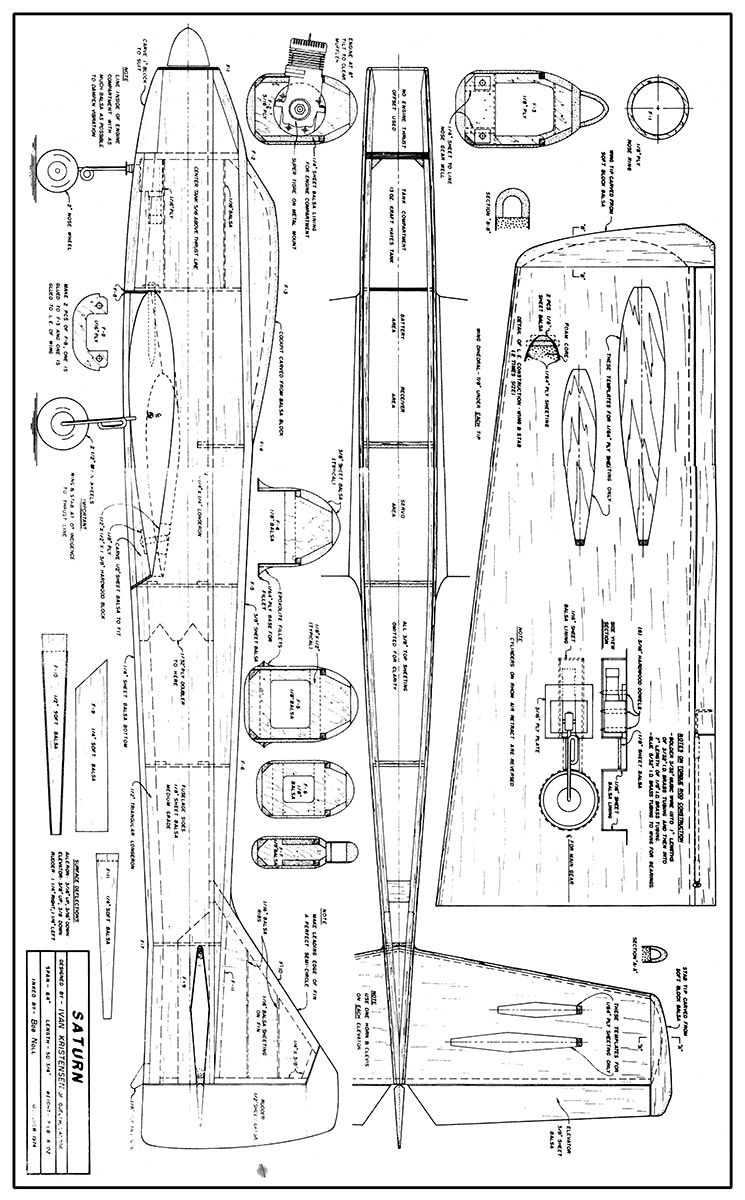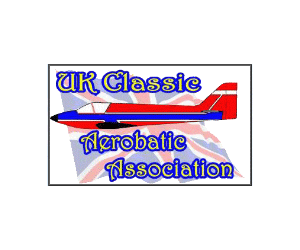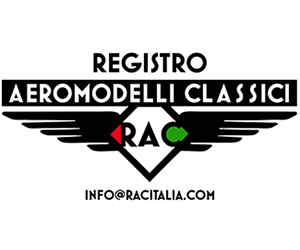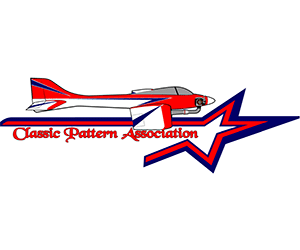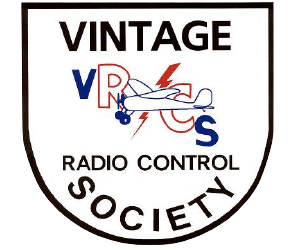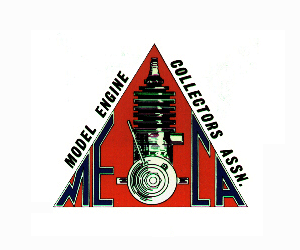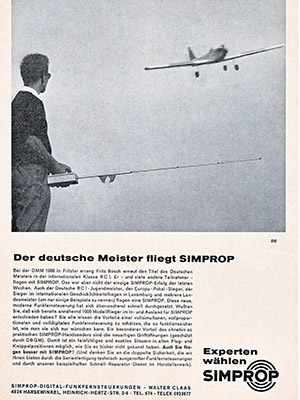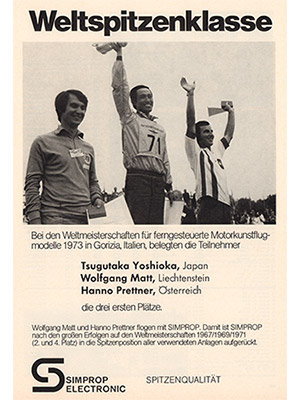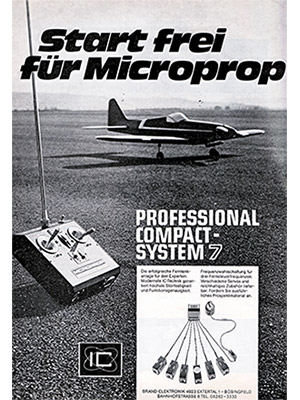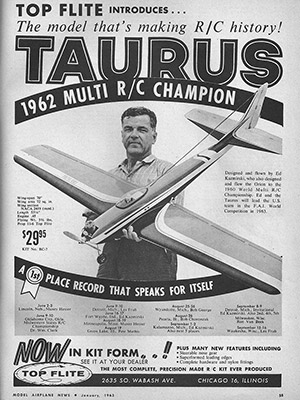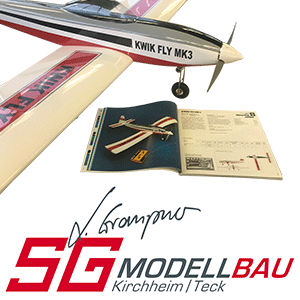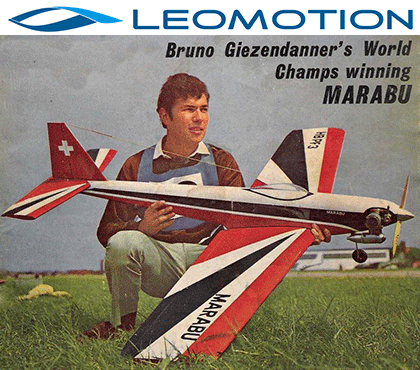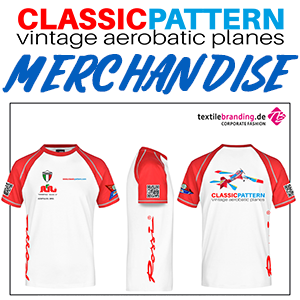Here is the competition model Saturn of the Canadian Ivan Kristensen from 1975 Saturn. Ivan also took part in the 1977 Tournament of Champions T.O.C. in Las Vegas with this model aircraft. Below is Ivan’s original report from 1976:
The Saturn is an original design based on current trends and personal experience. In the past eight years 1 have flown airplanes The Saturn aircraft, it was not because 1 thought there was no good design available, but rather because I wanted to give my aircraft a per designed by such famous pilots as Jim Kirkland, Ralph Brooke, Phil Kraft and Don Coleman.
Most recently, I used Coleman’s Cutlass. for four years, with much success. When I decided to design my own Pattern sonal to uch. For some years 1 have had a desire to design my own aircraft, and during that time I spent many hours reading books an the subject and studying drawings of almost all of the designs currently being used by the top pilots from around the world, Yoshioka Tsugutaka, Wolfgang Matt, H anno Prettner and M ike Birch to mention a few. That is to say nothing of the people from Canada and the U . S. who were consulted. The Saturn is basically a lange aircraft with a thick wing and lang moments.
My experience with long moments goes back to the Crusader. lt had a long tail moment and therefore a soft elevator which 1 believe is desirable. The FAI pattern should be smooth flowing, and that is most easily achieved with a design such as the Saturn. As we all know, it is very difficult to keep a Pattern airplane with retracts and extra battery packs, etc., under 8 lb. (3.6 kg.), so in order to keep the wing loading around 20 oz. to the sq. ft. and the speed somewhat under that of a missile, 1 arrived at 728 sq. in. of wing area. 1 also decided that 17% at the root and the tip would keep the speed down to rohere it enables you to do all the maneuvers in the frame as set down by the FAI. The 17% wing had other advantages: (1)The aircraft will maintain a more constant speed during all looping maneuvers, and (2) lt enables you to bring the aircraft in for landing at a very high angle of attack without any stalling characteristics—in other words, walking speed.
The theory of a large wing with a 17% sec tion does indeed lend itself well to the FAI pattern. There were several things 1 wanted in the fuselage. One was the large nose ring with a smaller spinner that allows better cooling of the engine (which is essential with today’s synthetic oils), and another was a larger engine compartment. That idea came from the Cutlass. 1 also wanted to be able to retract the nose gear without having to ex tend the nose gear-well into the leading edge of the wing. On previous designs, I found that it was not only very difficult to make, but it also weakens the airframe. To make this possible 1 had to have a fairly long nose moment, but as mentioned earlier a long tail moment had been elected so the two requirements of a soft elevator and a nosegear-well forward of the leading edge were to coincide.
The thrust line is position ed in such a way that a regular tank such asa 12 oz. SS Pylon or a Kraft Hayes 13 oz. can be installed without any difficulty—and again forward of the leading edge of the wing. When I attended the World Cham pionship in Doylestown, PA; the fantastic accuracy with which Wolfgang Matt preformed the stall turn in the Figure “M” and also his outstanding Slow Roll and 4 Point Roll maneuvers really impressed me. I thought a great deal about how he ac complished them and concluded that it had to do with the rudder-fin combination. One significant factor was that the leadingedge of the fin had a very large radius. Common sense dictates that a thick fin like that would create more drag aft of the CG and therefore would minimize any fishtailing during a stall turn and level flight as well. These features were then incorporated into the design of the Saturn. The fin side area was kept to a minimum to achieve good crosswind characteristics. During the first test flight.
I realized that 1 must have hit the jackpot with this idea because the Saturn has the nicest working rudder of any design 1 have ever flown. When you consider that the Figure “M,” Slow Roll, 4-Point Roll, and 8 Po int Roll all have 15 K factors, you can see why that is very important. The rolling tendencies, when rudder is applied, are just nonexistent.
CONSTRUCTION. Although the construction of the Saturn is kept as simple as possible, it should be pointed out that an aircraft of this type should not be built by a beginner who is just learning to fly, but rather by the more experienced pilot. With this in mind, I know that a lot of you people out there in RC land want to apply your own building techniques, so therefore I will only cover some of the pitfalls. I would strongly recommend that you write to M.A.N. for the full size drawing.
TEST FLIGHT AND “TRIMMING. I can’t emphasite enough how important it is to check everything thoroughly before the big moment of the first flight. Just think of how it would feel to lose a brand new airplane just because you forgot to tighten up the screw in the elevator output arm or because the radio wasn’t charged. So make sure everything is checked and double-checked. M ai n tain a standard like that, and your airplanes will last a lot langer. As far as trimming your airplane. l would very strongly recommend that you obtain the March and April, 1971, issues of M.A.N, and read the articles by Jim Kirkland an his A6 Intruder.
On page 80 in the April issue, Mr. Kirkland gives a very thorough description of how to trim a Pattern aircraft- a description I would not be able to improve on.
The Saturn is not the key to instant success. Na single design is. For any one to make the winners circle, he must have a good airplane, good equipment and a good motor—and learn to maintain it. But most of all. he must put in a lot of dedicated hours practicing. White some things can be bought, Pattern flying must be learned.
Text and some images: MAN, Günter Hoppe
Specifications
Wingspan: 1,63 Meter
Lenght: 1,29 Meter
Weight: around 3,6 kg
Engine:
